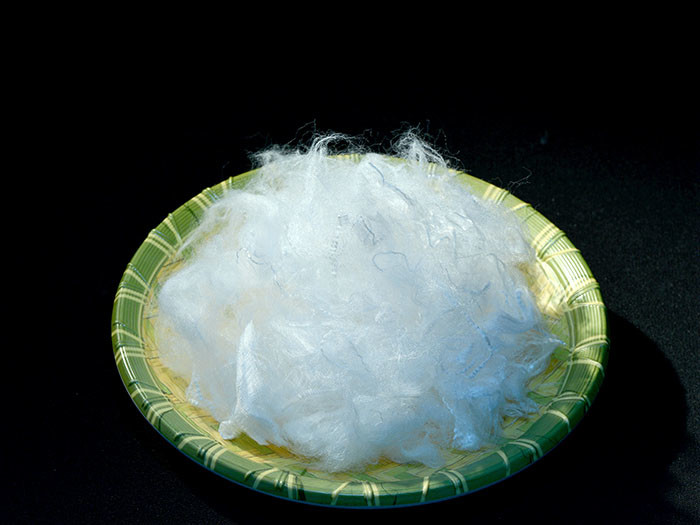CHANGSHU AZURE IMP&EXP CO.LTD |
|
Verified Suppliers
|
|
100% Biodegradable Short Cut Fiber PLA Polylactic Acid Fiber For Paper-Making
PLA Degradable Fiber 1.5D For Medical Nonwoven
1 . Descriptions:
PLA production is a popular idea as it represents the fulfillment of the dream of cost-efficient, non-petroleum plastic production. The huge benefit of PLA as a bioplastic is its versatility and the fact that it naturally degrades when exposed to the environment. For example, a PLA bottle left in the ocean would typically degrade in six to 24 months. Compared to conventional plastics (which in the same environment can take several hundred to a thousand years to degrade) this is truly phenomenal
2 . Specifications:
| No | Test | Unit | Data | ||
| 1 | Titre | dtex | 1.5. | ||
| 2 | Tenacity at break | cN/dtex | 3.55 | ||
| 3 | Elongation at break | % | 38.27 | ||
| 4 | Length | mm | 39.2 | ||
| 5 | Crimp number | number/25mm | 15 | ||
| 6 | Defect | mg/100g | / | ||
| 7 | Over-length fiber | mg/100 | 2 | ||
| 8 | Oil content | % | 0.2 | ||
| 9 | Dry thermal shrinkage | % | 5 | ||
| 10 | Moisture | % | - | ||
3 . Advantages:
PLA can be recycled as it can be broken down to its original monomer by a thermal depolymerization process or by hydrolysis. The outcome is a monomer solution that can be purified and used for subsequent PLA production without any loss of quality.
However, the recycling infrastructure for PLA hasn’t been scaled up yet, mainly because end markets for the recycled material haven’t been developed.
While recycling PLA might be a viable solution in the future, we currently recommend composting as a preferred end-of-life option, especially as foodservice packaging is often contaminated with food scraps, making recycling impractical.
4 . More pictures:
